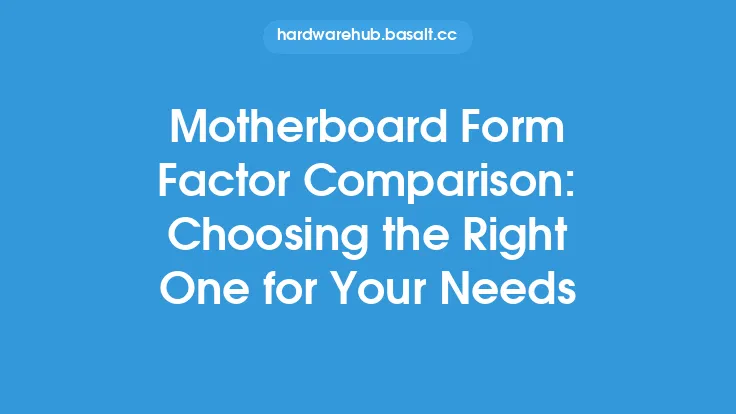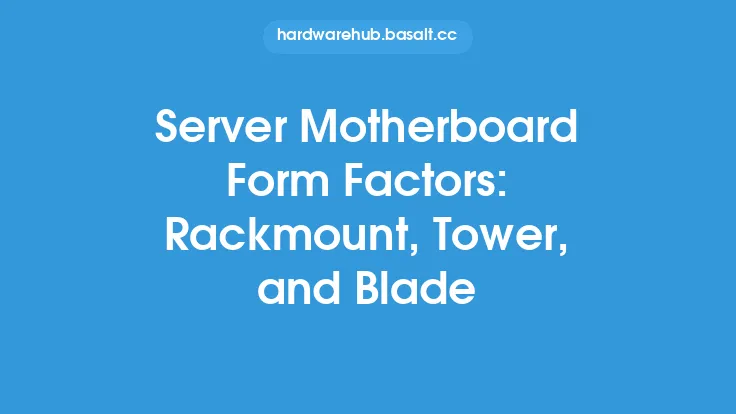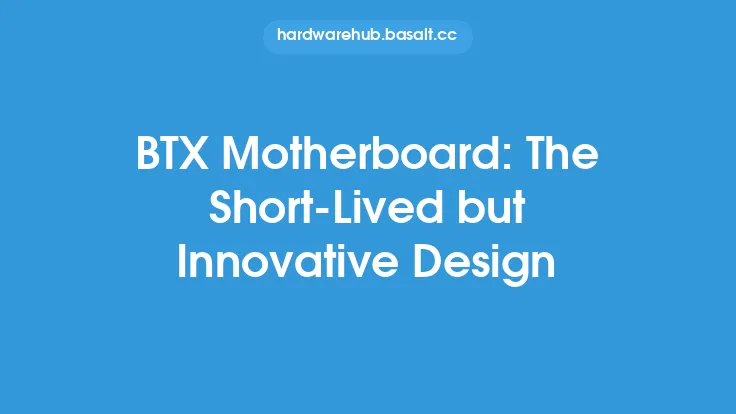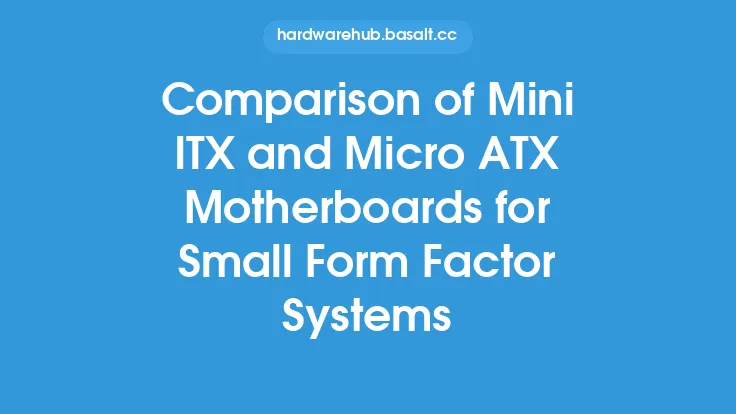The NLX motherboard form factor is a rare but efficient design that was introduced in the late 1990s. It was developed by Intel as a replacement for the LPX (Low Profile Extension) form factor, which was commonly used in low-profile desktop systems. The NLX form factor was designed to provide a more efficient and flexible way of building compact desktop systems, while also improving airflow and reducing noise levels.
Introduction to NLX Motherboard
The NLX motherboard form factor is characterized by its unique riser card design, which allows for the installation of expansion cards in a vertical position. This design provides several benefits, including improved airflow and reduced noise levels, as well as increased flexibility in terms of expansion card installation. The NLX form factor also features a compact size, with a maximum length of 13.6 inches (345 mm) and a maximum width of 9.6 inches (244 mm).
Key Features of NLX Motherboard
One of the key features of the NLX motherboard form factor is its riser card design. The riser card is a separate PCB (Printed Circuit Board) that connects to the motherboard via a specialized connector. The riser card provides a vertical slot for the installation of expansion cards, such as graphics cards, sound cards, and network cards. This design allows for improved airflow and reduced noise levels, as the expansion cards are not obstructing the airflow within the system.
Technical Specifications of NLX Motherboard
The NLX motherboard form factor has several technical specifications that define its design and functionality. The form factor features a maximum of 4 expansion slots, which can be used for a variety of expansion cards. The motherboard also features a range of connectors, including USB ports, serial ports, and parallel ports. The NLX form factor also supports a range of processors, including Intel's Pentium and Celeron processors, as well as AMD's Athlon and Duron processors.
Advantages of NLX Motherboard
The NLX motherboard form factor has several advantages that make it an attractive option for compact desktop systems. One of the main advantages is its compact size, which makes it ideal for small form factor systems. The NLX form factor also provides improved airflow and reduced noise levels, which makes it suitable for applications where noise levels are a concern. Additionally, the riser card design provides increased flexibility in terms of expansion card installation, which makes it easier to upgrade and configure the system.
Disadvantages of NLX Motherboard
Despite its advantages, the NLX motherboard form factor also has several disadvantages. One of the main disadvantages is its limited availability, as the form factor was not widely adopted by motherboard manufacturers. The NLX form factor also has limited expansion capabilities, as it only features a maximum of 4 expansion slots. Additionally, the riser card design can be prone to damage, which can make it difficult to repair and maintain the system.
Applications of NLX Motherboard
The NLX motherboard form factor is suitable for a range of applications, including compact desktop systems, home theaters, and industrial control systems. The form factor's compact size and improved airflow make it ideal for small form factor systems, while its reduced noise levels make it suitable for applications where noise levels are a concern. The NLX form factor is also suitable for industrial control systems, where its compact size and rugged design make it ideal for use in harsh environments.
Conclusion
In conclusion, the NLX motherboard form factor is a rare but efficient design that provides several benefits, including improved airflow and reduced noise levels. The form factor's compact size and riser card design make it ideal for compact desktop systems, while its limited expansion capabilities and limited availability make it less suitable for applications that require high levels of expandability. Despite its limitations, the NLX motherboard form factor remains a viable option for applications where compact size and reduced noise levels are a priority.





